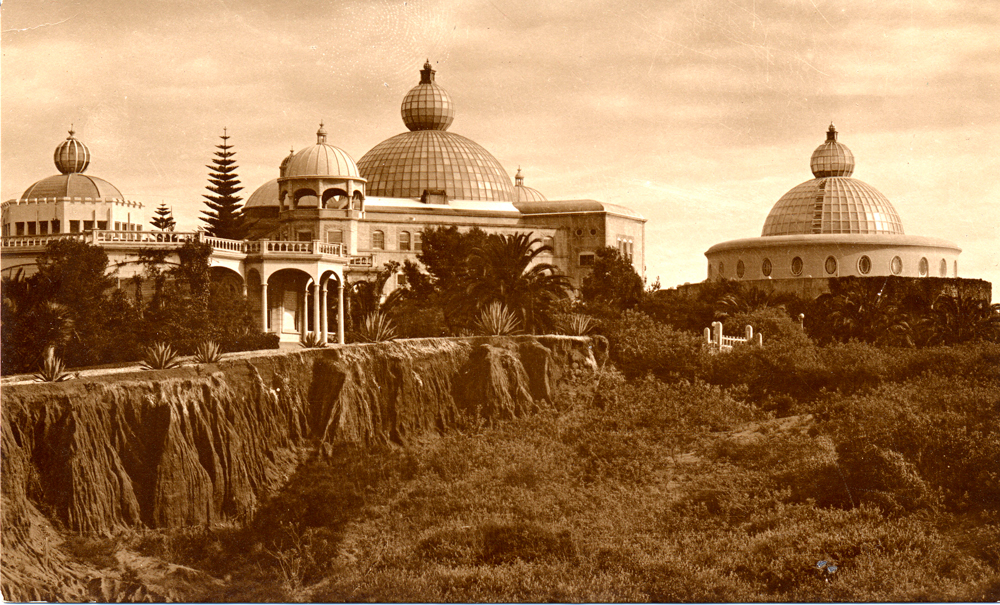
The human eye is naturally drawn to light. Even the smallest flicker of flame in a dark room will grab its attention. It was light that caught the eyes of hundreds of people living in San Diego in the early 1900s – the light of Lomaland, the city on the hill. People are still drawn to its light today, just in different ways.
Between 1897 and 1942, long before Point Loma Nazarene University came in 1973, this idyllic part of Sunset Cliffs was occupied by the Theosophical Society – a religious movement founded by Helena Blavatsky, Henry Steel Olcott and William Quan Judge. According to Emmett A. Greenwalt, author of “California Utopia,” the Point Loma Theosophical Society was heavily influenced by religions, philosophies and sciences, and the group set out to study these things.
Theosophists believed they were living in “the dawn of a new cycle.” They isolated themselves from the world, living together to reestablish values they believed were lost in the larger culture. All the while, they were chasing after the light. With architecture and amethyst domes designed to draw light into the campus and enough fruit trees to be named an “agricultural Eden” by Greenwalt, they aimed to create a utopian society.
Katherine Tingley took charge of the Theosophical Society when Judge died in 1896 and established the Theosophical Society’s headquarters in Point Loma. She wanted her Lomaland community to be almost entirely self-sustaining, which led to the group importing trees so fresh produce could be available year-round. By 1919, the Theosophical Society had everything from a textile factory to a publishing house. And, of course, enough residence halls and homes to shelter families and even Tingley herself.
Rick Kennedy, PLNU professor of history and environmental studies, teaches a class on California history. He said that the Theosophical Society’s architecture was specifically designed to enhance spiritual ideals, which is why most of their buildings were designed as circles and octagons. But light was at the core of their architecture.
“[They believed] the light would come in, the light’s going to guide us, and light’s almost an angelic being,” Kennedy said with a smile, gesturing around his large office facing the ocean. California history books line each of his shelves, and family photos are strewn about, showing snapshots of his own history. “[They thought] we were square one in the cosmos.”
These original theosophical buildings are still scattered around campus. Mieras Hall was originally the home of Albert Spalding, a pitcher for the Chicago White Stockings and a supporter of the Theosophical Society’s ideals. Cabrillo Hall served as the International Center Headquarters and residence for Katherine Tingley. Today, Mieras Hall is the office of PLNU’s president, Kerry Fulcher, and Cabrillo Hall is home to the Communication Studies department.
James Wicks, PLNU media and film studies professor, works in an office within Cabrillo Hall, which he believes used to be a bedroom. The office is angular, but Wicks has made the most of the space by moving his desk so he can look out the westward-facing windows. Wicks expressed that it feels weird to work in someone else’s previous residence, and noted that his office is complete with a “creepy closet.” But aside from strange building layouts, Wicks said that the society’s beliefs feel more peculiar to him.
“I have an admiration for any approach that attempts to bring in nature as part of its worldview, so I appreciate that gesture,” Wicks said. “But what I value and how I approach spirituality is not in the same worldview or framework. … What’s not appealing to me about transcendentalism or theosophical societies is that you miss both the 100% material humanity that Christ represents, and at the same time you miss 100% of Christ’s direction to the triune God.”
Even as different religions and beliefs have come through PLNU’s campus, Kennedy believes God has had his hand on this campus all along.
“I’m a believer that places have a holiness, places have a purpose and certain places are more holy than others,” Kennedy said.
The human eye is still drawn to the light, but it’s a different light students seek at PLNU. Today’s campus has become a place where students can find worship services in parking lots, pray in Prescott Chapel and hear students’ testimonies every Thursday night at Timeout Chapel. The light of PLNU is centered on the Nazarene Wesleyan tradition, “Where grace is foundational, truth is pursued and holiness is a way of life,” according to the university website. Even still, there’s one thing PLNU has in common with the Theosophical Society: We’re all chasing after a utopia in some way.
“[A definition of] utopia, is ‘intentional community,'” Kennedy said. “And as an intentional community, you sign a covenant to be here and I sign a contract. But … it’s about lifestyle, religion and everything else. It’s a beautiful thing. We’re all something more.”
In the aftermath of the Great Depression and Tingley’s death, Lomaland began to dissolve, and by 1942 the campus was sold. In 1952, the Theosophical Society’s “Homestead” (temple) was destroyed in a fire. This large structure with its amethyst domes captured the attention of locals and even those sailing far out at sea as it lit up the night sky. This very same plot of land is where PLNU’s Brown Chapel sits today.
History repeated itself when the Theosophical Society’s biggest library went up in flames during the recent Altadena fire in Los Angeles. It was home to the library, archives and the Theosophical University Press publishing house. The remnants from their history may be lost, but some of their ideals still live on, both in modern-day theosophists and on campus.
“[Theosophists] are spiritual people seeking peace, love, justice, universal brotherhood and everything else,” Kennedy said. “Well, that’s what we seek, too.”
One of the Theosophical Society’s largest contributions to PLNU’s campus was the erection of the first open-air Greek theatre in North America. Tingley dreamed of her community becoming “an Athens of the West,” and by 1901, the columns were built. PLNU’s Greek Amphitheatre has been a place of mystery and reflection for generations – especially for Kenneth Morris, the poet laureate of Point Loma during the time of the Theosophical Society and author of the poem “Sunset from the Greek Theatre.”
“I saw the scarlet brooding Sun
Peer through the eucalyptus trees
Ere he swept on to his sanctuaries
Of Mystery, of oblivion …” Morris wrote in “Sunset from the Greek Theatre” for the November 1920 edition of the Theosophical Society’s magazine.
“I felt a sudden warning run,
A whispering, o’er the winds and seas,
And curiously he peered, the Sun,
Back through the long-leafed blue-gum trees,” Morris continued.
Today, a group of students sit on the steps of the Greek Amphitheatre after a long day of classes, breathing in the earthy scent of the same trees the Theosophical Society planted over a hundred years ago. As the sun dips into the horizon, everyone has their phones out to take pictures of this place which has captured the attention of thousands of people around the world for a century.
The students stand and return to their residence halls to catch up on homework or sleep. Whether they realize it or not, they’re chasing after the very same thing as those who have come before them: a California utopia.
